This weekend’s French Grand Prix marks the fourth to be held at Paul Ricard since Formula 1 returned to the Le Castellet track in 2018.
However, it may prove to be the last F1 race held in the great motorsport nation as the circuit’s contract to host the race is due to expire at the end of this season.
Heading into what could be the fourth and final race at Paul Ricard, here at the six talking points for the French Grand Prix weekend.
The final French Grand Prix… for now?
Last year Paul Ricard saw by far its most interesting race since it returned to the schedule, with Max Verstappen chasing down and passing Lewis Hamilton for victory in the closing laps.However the track, which F1 first visited in 1971, has often struggled to produce much in the way of entertainment over its three races since returning to the Formula 1 calendar. Regrettably the option of bypassing the awkward Mistral chicane, which could well have improved the spectacle, was never taken up.
With the circuit’s contract to host the French Grand Prix due to expire at the end of this season and competition over which venues will earn the right to host Formula 1 events higher than it perhaps ever has been, Paul Ricard looks to be towards the top of the list of circuits most likely to make way for other tracks on the calendar.
That could mean that this weekend may well prove to be the final French Grand Prix for the foreseeable future. But while many may not miss the track if it does indeed drop off the schedule, the loss of a race in one of Europe’s most important motorsport nations will be keenly felt. Particularly when there are two race-winning French drivers on the grid for the first time in decades, and Francophone championship contender Charles Leclerc hails from Monaco, less the 200 kilometres up the road.
F1 CEO Stefano Domenicali recently discussed the idea of potentially moving the French Grand Prix to a new street circuit in Nice, but there’s little to suggest this amounts to more than a tactic to apply pressure to the Monaco race promoter. If Formula 1 is to lose its race in France, hopefully it will not be long until a new and more interesting host venue can be found. But the country’s only other F1-grade track, Magny-Cours in rural Nevers, hardly fits Liberty Medias’s target for races in ‘destination cities’.
Ferrari’s reliability woes
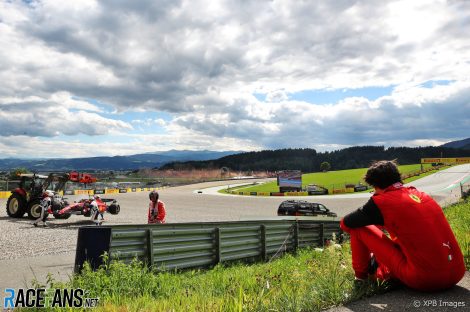
However, over the second quarter of the year, the narrative has flipped entirely. With four mechanical-related retirements equally shared between Leclerc and Carlos Sainz Jnr since the Spanish Grand Prix, it is now Ferrari who appear to be at the biggest risk of breaking down during races – something the team cannot afford as the team continues to compete for wins against Red Bull.
Track data: Paul Ricard
| Lap length | 5.842km (3.63 miles) |
| Grand prix distance | 309.626km (192.393 miles) |
| Lap record (race) | 1’32.740 (Sebastian Vettel, 2019) |
| Fastest lap (any session) | 1’28.319 (Lewis Hamilton, 2019, qualifying three) |
| Tyre compounds | C2, C3, C4 |
| 2021 Rate the Race | 8.23 out of 10 |
| 2021 Driver of the Weekend | Max Verstappen |
Leclerc could even be considered fortunate to have won last time out in Austria, after driving with a partially stuck throttle to keep ahead of Verstappen over the last 10 laps. Sainz, however, was denied a likely second place after his power unit expired so dramatically in pursuit of Verstappen. It’s little surprise Ferrari are worried about their reliability over the rest of the season.
“It’s certainly a concern,” admitted team principal Mattia Binotto after the race in Austria. “But the people back at Maranello are working very hard trying to fix them.
“We’ll have new elements and I know how strong they are working, how good they are, and that I can count on them that it will be addressed very soon, hopefully as soon as possible.”
But they and their rivals will face an additional challenge from the conditions this weekend.
Beating the heat
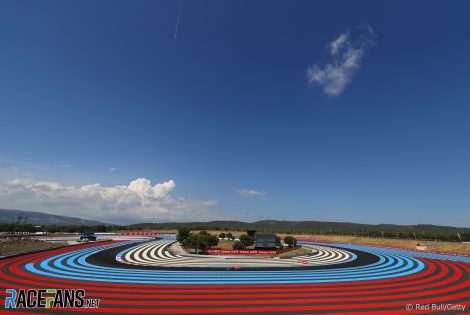
Last Sunday professional cycling’s governing body, the Union Cycliste Internationale, activated its extreme weather protocols for the 15th stage of the Tour de France, held in the south of the country not far from the Le Castellet circuit. Early forecasts predict temperatures around the low thirties Celsius – by no means extreme by F1 standards – but with the potential to pose an additional strain to human and machine over three days of track action.
If those forecasts do turn out to be accurate, that will make this weekend easily the hottest French Grand Prix since Formula 1 returned to the circuit in 2018. What that could mean for tyre temperatures over a track surface that could breach 60C is not insignificant either, with some cars more susceptible to overheating their tyres and others having more challenges with getting their rubber up to optimal temperatures.
Mercedes’s best track of the season?
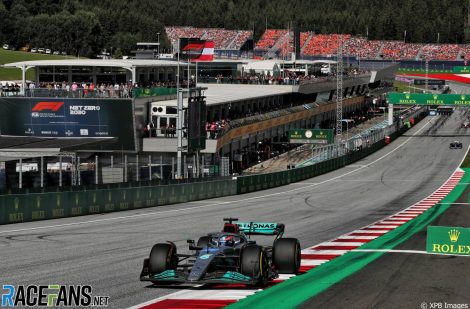
The major upgrades introduced to the W13 at the Spanish Grand Prix back in late May were focused on improving the car’s performance in the medium-to-high-speed corners and appeared to work well. But while two back-to-back races at street circuits appeared to prove challenging for Mercedes, Russell still managed to secure a podium in third. Since then, Hamilton has achieved a podium in all three races.
Heading to the super-smooth testing facility of Paul Ricard – that Formula 1 decided years ago should play host to a grand prix – Mercedes know this will be a circuit where the impact of their car’s weaknesses will be minimised. They have had difficulty getting heat into their tyres this year, but the punishing conditions should help with that.
As one of the fastest circuits of the season by average lap speed, and with only a small number of truly slow corners, Mercedes can expect to make the most of the Paul Ricard circuit and hopefully get even closer to Red Bull than they did in Austria, where both Hamilton and Russell appeared to be among their rivals in qualifying before separate mistakes saw both crash out.
But while single-lap pace has looked markedly improved at Mercedes in recent rounds, race pace is another matter. There is still work to do if Mercedes are going to catch up enough to begin fighting for race wins once again.
Can Haas keep the streak going?
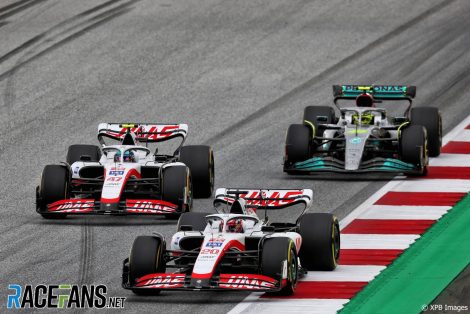
Then came Silverstone and the British Grand Prix. A major breakthrough for Mick Schumacher saw the team’s second-year driver finally claim his first career points in Formula 1 with eighth place, just behind Verstappen following some particularly robust defending from the world champion. Magnussen also took tenth to secure the team’s first double points finish since the 2019 German Grand Prix.
Then the following weekend in Austria, the team fared even better. A strong qualifying session on Friday saw Magnussen and Schumacher secure sixth and seventh on the sprint race grid, which became seventh and ninth, respectively, for Sunday’s grand prix. In the race, Schumacher drove possibly his best race of his career so far to take his best-ever finish in sixth, while Magnussen held onto eighth despite suffering a misfire from the early stages.
After two double points finishes in succession, morale at Haas is higher than it has been all season. And with a significant upgrade package due to arrive next week at the Hungarian Grand Prix, the team will be looking to keep their run of points finishes going before both Magnussen and Schumacher gain the benefit of a hopefully improved car for the next race.
Track limit troubles
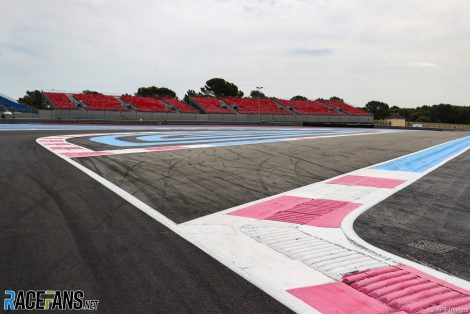
The generosity of the track limits at the Red Bull Ring has been a problem since the venue was reworked by Hermann Tilke 25 years ago. Paul Ricard is another track to experience a makeover the upshot of which was to make staying within the circuit’s confines largely optional. There is barely a single blade of grass, nor a spit of gravel to be found around its 5.8 kilometres.
With nothing but asphalt sitting at the perimeter of the circuit, the temptation to run as close to the white lines as possible to maximise exit speed is as high as it is anywhere on the calendar. Also, due to the unique nature of Paul Ricard, drivers are compelled to follow very direct instructions about how they should rejoin the circuit should they miss turn two, turn four or the chicane on the long Mistral Straight.
The rules over track limits will not only affect whether drivers have times deleted, but will also likely come into play during close racing situations. With Alexander Albon receiving a penalty in the Austrian sprint race for forcing Lando Norris off the circuit, sparking debates over whether other drivers should have received similar penalties in recent rounds, it’s likely that there could be more penalties handed down this weekend and almost certainly more debates.
Advert | Become a RaceFans supporter and
2022 F1 season
- Mercedes told me “you’re wrong” about 2022 car’s problems – Hamilton
- FIA confirms all 10 F1 teams complied with 2022 cost cap
- Steiner “not ashamed” of panning “slow” Schumacher in Drive to Survive
- Albon believes year out of F1 improved him as a driver
- Hamilton sees diversity gains in F1 years on from his ‘traumatising’ experience of racism




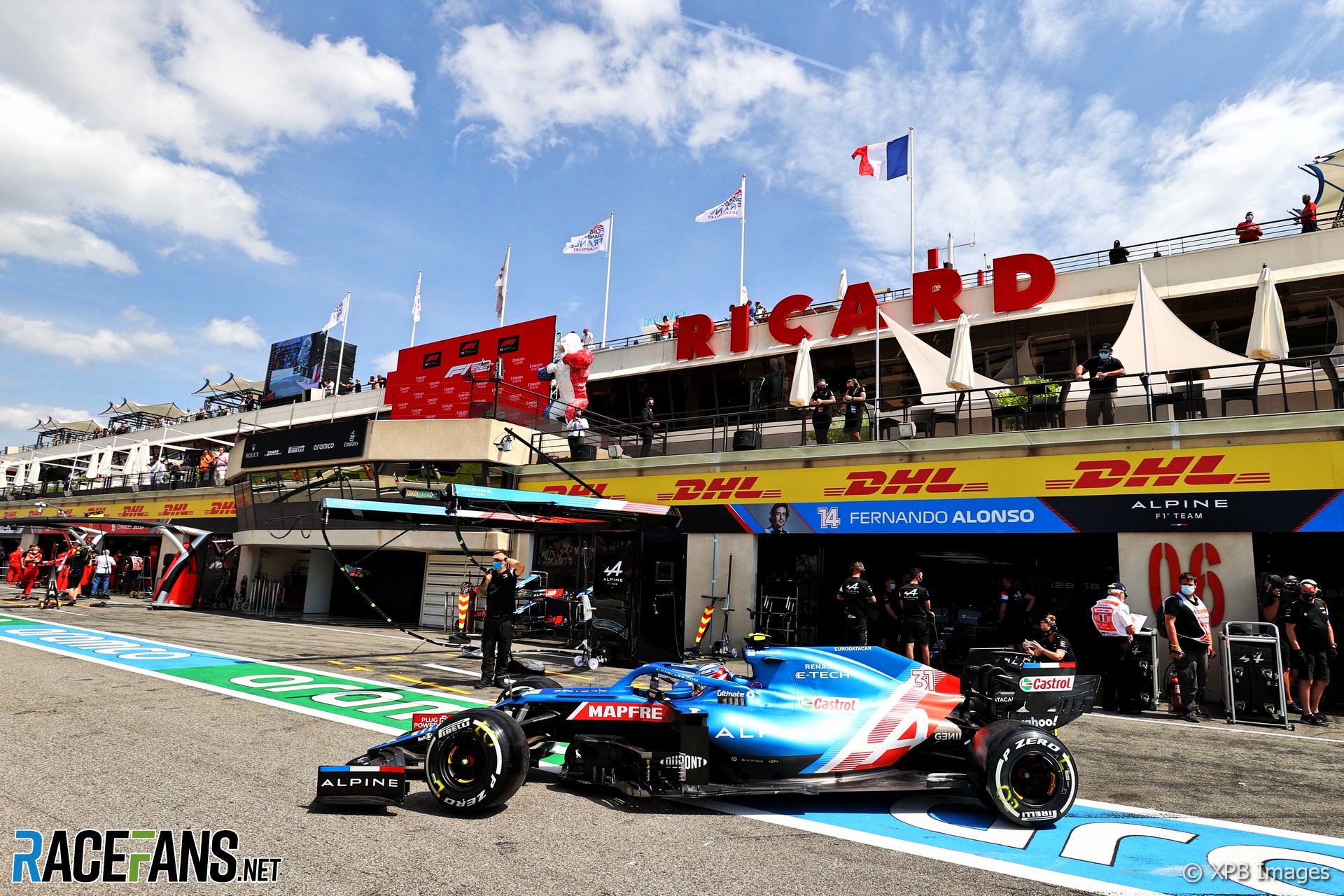
Kribana (@krichelle)
19th July 2022, 13:14
I live in France now, and the heat here on Monday reached levels to a heat wave that nobody went out in the city as a normal day. The streets were almost deserted when I was having a walk. Guess everyone spending the day at the beach or swimming pools. I think the car with the best tyre management will win this weekend. Especially front tyre management.
Srdjan Mandic (@srga91)
19th July 2022, 13:50
Or the one with the best strategy might win. Last year the Mercedes was slightly faster and also easier on its tyres than the RB, but they still lost the race due to bad strategy. I predict at least two stops during the race.
Yes, the heatwave in Europe is crazy this week. Temperatures may reach up to 40°C in some parts of our continent. I wonder if that may affect the GP as well (spectators rather staying at home/their hotel on Friday and Saturday).
Srdjan Mandic (@srga91)
19th July 2022, 13:42
1) Yes, looks like the GP at Paul Ricard is done for the next couple of years. I just hope they won’t move the race to the streets of Nice and therefore throw Spa out of the calendar. That would be horrible!
2) Ferrari’s reliability issues are definitely a concern, one which could cost them the title in the end. Sainz should be fine, as he’ll probably switch to unit #4 and take a grid drop this weekend. But Leclerc can’t afford another retirement this weekend, otherwise his title hopes are pretty much over. For the sake of the championship, Charles has to win this race or at least finish ahead of Verstappen.
3) The heat will certainly make it tricky for everyone, especially making the tyres last over a longer stint. Paul Ricard is generally hard on tyres and with ambient temperatures of over 30°C this will get even more difficult. The fastest car might not win this race, but rather the one who adapts best to the conditions. The strategies could play an important role too.
4) Yes, I think that’s Mercedes’ best chance so far to win a race. Their car is good through medium- to high speed corners and Paul Ricard has very little bumps, plus the W13 is easy on tyres which should come in handy on Sunday. Tyre warm-up isn’t gonna be a factor this weekend too, so they should be also in the hunt for pole. Hopefully we’ll see a threeway fight on Saturday and Sunday!
5) I don’t think Haas are going to be as competitive as they were in Silverstone and the RB Ring. Their lack of downforce may hurt them more in these higher temperatures, especially during the race. I expect them to fall behind McLaren and Alfa Romeo again, but be quicker than Alpha Tauri, Aston Martin and Williams. Their car is fairly good through medium- to high speed corners, so they should at least quallify well.
6) Track limits may be an issue at this track on the exits out of T2, 5, 6 & 11. Somehow I doubt it will be a bigger issue than it was two weeks ago. It’s not worth running that wide, if you’re facing a 5-sec-penalty. The drivers have been warned about it at the last round, so I doubt they will want to get a repeat of that in Paul Ricard.
AlanD
19th July 2022, 14:16
Good thoughtful points Srdjan. I wondered if the heat would expose reliability issues for the engines. Given the temperatures engines run at, does the ambient air temperature make any significant difference to cooling? Any engineers in the house?
SjaakFoo (@sjaakfoo)
19th July 2022, 14:52
I don’t think you need to particularly be an engineer to know that high performance engines that need a lot of cooling are going to have more issues when the natural air they use for cooling is hotter. It means they’ll have less cooling, and run hotter, and as such, there might be an issue with engines.
Whether there are specific reliability concerns for each of the F1 teams, I’m afraid only those specific teams will have the details on that and they’re not going to be particularly forthright about it beforehand :D
AlanD
19th July 2022, 15:28
Sjakkfoo, I agree it is obvious that higher temperatures mean less cooling, simple thermodynamics, but it isn’t obvious to me how significant this would be.
For us humans, our operating temperature is about 310K. Here in the UK, 298K is a warm day and today we hit a new record high of 313K. So whilst it might feel like a huge temperature range to us, it is only a small increase on an absolute temperature scale.
I think an F1 engine runs at about 380K, so it isn’t obvious to me if it is affected by changes at the low end of the scale. Maybe they only start overheating once the air temperature exceeds 340K, for instance, or maybe they just funnel more of the airflow through the engine cooling, change the size of the air intake. Maybe the engines run better, more consistently, at high temperature tracks, or does hot air mean thinner air and less compression and power from the engine, so less risk of it blowing a gasket.
All I’ve got is questions, not answers, which is why I was hoping someone with engineering knowledge of IC engines could offer some insights.
jff
19th July 2022, 17:58
It’s a lot more complicated than what you suggest, and it requires a few articles to explain.
– Assuming cooling fluids are 380K/110C (I expect it to be hotter) there is a huge difference in cooling surface or airflow needed when ambient is 10C vs ambient at 40C (simplistically 50% more surface or a significantly higher increase in airflow).
– the hotter air can be thinner, but air thickness depends a lot more on local air pressure than temperature. (and when hot air expands it actually cools down).
– the efficiency of the engine depends more on humidity than temperature: higher humidity helps a better combustion but it reduced the efficiency of cooling.
And that’s still only part of the story ;)
Jere (@jerejj)
19th July 2022, 15:21
@srga91 Spa wouldn’t get axed directly for Nice, even if the latter ever becomes true, but Shanghai & Kyalami together, if the former can finally reoccur & the latter can return for next season already rather than needing to wait for 2024.
Track limits are a non-issue at T2 & 5 (also last corner) exits because these have small bumps that kill acceleration speed & I doubt 11 or Beausset either, any more than before, given turning radius.
However, I also doubt track limits would necessarily be a bigger issue than at Red Bull Ring since drivers can be more prepared & careful from that experience.
Jere (@jerejj)
19th July 2022, 15:13
The final French Grand Prix… for now? – Most likely.
Ferrari’s reliability woes – Hopefully, their reliability won’t prove costly for the championship battle.
Beating the heat – Everyone will survive. Not the first time with low-30s even at Circuit Paul Ricard for the French GP weekend either.
Mercedes’s best track of the season? – Possibly.
Can Haas keep the streak going? – We’ll see.
Track limit troubles – Maybe more than at Red Bull Ring, although small bumps at three corner exits help tackle this issue + the runoff surface is abrasive, which is unideal for tyres, so the incentive for going wide is lower.
MacLeod (@macleod)
20th July 2022, 8:38
I wish Paul Richard for testing only as it’s the best one for testing. I noticed a lot of races are hold when it’s hot I wish they are evading these kind of tracks.
Bleu (@bleu)
20th July 2022, 9:05
Looking at Max’s pole lap last year the only place where he got close to track limits was turn 2. So while there are a lot of run-off, the optimum lines don’t seem to be that close to track limits as in some other tracks.
Goriot
19th July 2022, 20:56
F1 really needs this one and only rule:
– 24 races per year are the maximum.
– 8 classic circuits are immortal (Spa, Monza, Silverstone, etc) and will stay forever.
– 8 circuits are chosen by votes from drivers (the best/fun races).
– 8 circuits are driven by money (the countries that pay more).
So it will be the best situation: classics are kept, fun races are present, and money enters.
AlexS
20th July 2022, 17:30
Nice
Chris McG
19th July 2022, 23:26
Totally agree with your concept…
But I doubt Dominicali would give you the same +1…
Esploratore (@esploratore1)
20th July 2022, 21:18
What is it that made you choose this particular calendar? The money!
Adam Tate
20th July 2022, 20:40
Magny-Cours is so much better than Paul Ricard. I’d love to see F1 return there.